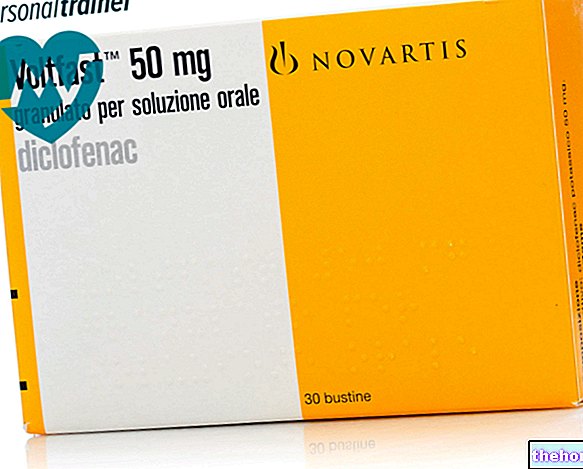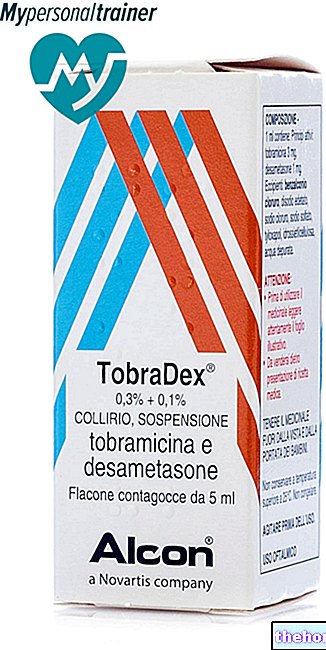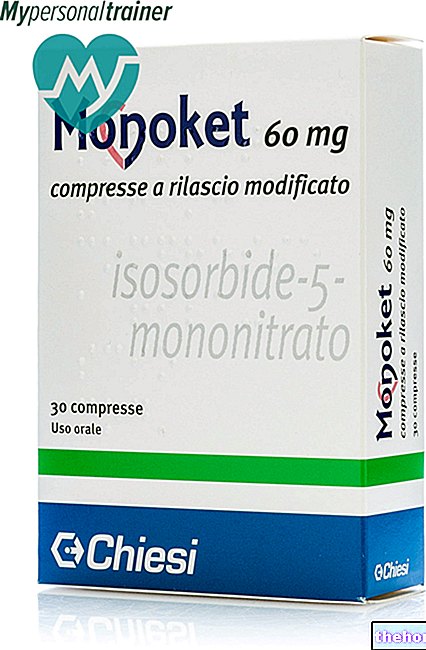Active ingredients: Selegiline
JUMEX 10 mg tablets
Jumex package inserts are available for pack sizes:- JUMEX 10 mg tablets
- JUMEX 5 mg tablets
Indications Why is Jumex used? What is it for?
Jumex is a medicine that contains a substance called selegiline as the active substance. Jumex blocks the action of an enzyme called monoamine oxidase (MAO) type B, thereby causing the concentrations of a substance called dopamine to rise.
Jumex is indicated in adult patients for the treatment of Parkinson's disease (central nervous system disease manifested for example by tremor, muscle stiffness, slowing of movement, difficulty in maintaining balance) and symptomatic parkinsonism (diseases with the same symptoms Parkinson's disease but with a different cause).
Jumex can be prescribed alone or in combination with other medicines used to treat Parkinson's disease
Contraindications When Jumex should not be used
Do not take JUMEX
- If you are allergic to selegiline or any of the other ingredients of this medicine
- if you suffer from severe movement disorders
- medicines to treat depression and some psychiatric diseases such as selective serotonin reuptake inhibitors (SSRIs), serotonin-norepinephrine reuptake inhibitors (SNRIs, eg venlafaxine), tricyclic antidepressants, monoamine oxidase (MAO) inhibitors;
- sympathomimetic medicines, a class of medicines that stimulate the nervous system;
- linezolid (antibiotic);
- opioids such as pethidine, medicines to treat pain; (see section Other medicines and Jumex);
- if you suffer from an injury to the stomach or intestines (active stomach or duodenal ulcer).
Precautions for use What you need to know before taking Jumex
Talk to your doctor before taking Jumex if:
- suffer from high blood pressure (hypertension),
- suffer from heart rhythm disturbances (cardiac arrhythmia),
- suffer from severe chest pain (severe angina pectoris),
- suffer from a mental disorder (psychosis),
- have suffered from a stomach injury (peptic ulcer), as these conditions may worsen during treatment, - suffer from severe liver or kidney disease (severe liver or kidney dysfunction),
- must undergo a "surgical operation under general anesthesia,
- you are taking substances or medicines that are active in the central nervous system.
For those who carry out sporting activities
The use of the drug without therapeutic necessity constitutes doping and can in any case determine positive anti-doping tests.
Children and adolescents
There is no indication for a specific use of Jumex in patients under the age of 18.
Interactions Which drugs or foods may change the effect of Jumex
Tell your doctor or pharmacist if you are taking, have recently taken or might take any other medicines.
Contraindicated associations
- with sympathomimetics, a class of drugs that stimulate the nervous system;
- with pethidine (also called meperidine), a medicine used to treat pain;
- with selective serotonin reuptake inhibitors (SSRIs) and serotonin-norepinephrine reuptake inhibitors (SNRIs, eg venlafaxine), medicines used to treat depression and some psychiatric diseases;
- with fluoxetine, a medicine used to treat depression. The latter should not be used for 14 days after stopping Jumex therapy. Leave at least 5 weeks between stopping fluoxetine and starting Jumex therapy;
- with tricyclic antidepressants (eg amitriptyline, imipramine, nortriptyline), medicines used to treat depression;
- with monoamine oxidase (MAO) inhibitors, medicines used to treat depression or Parkinson's disease;
- linezolide, an antibiotic to treat infections.
Combinations not recommended
- with oral contraceptives (birth control pills);
- with digitalis, a medicine used to treat a weak heart; - with anticoagulants, medicines that can slow down or stop the blood clotting process.
Associations requiring caution
- with levodopa (medicine used to treat Parkinson's disease), as side effects of levodopa such as involuntary movements and / or agitation may increase.
In particular, tell your doctor if you are taking:
- reserpine, a medicine used to treat mental disorders,
- papaverine, a medicine used to treat pain,
- vitamin B6 (pyridoxine), as they decrease the effects of levodopa.
JUMEX with food, drink and alcohol
- If you are taking selegiline and non-selective MAO inhibitors or selective MAOA inhibitors (medicines to treat depression or Parkinson's disease), avoid eating foods that contain high amounts of the tyramine substance such as aged cheese and leavened products.
- Avoid concomitant use of alcohol.
Warnings It is important to know that:
Pregnancy, breastfeeding and fertility
If you are pregnant or breast-feeding, think you may be pregnant or are planning to have a baby, ask your doctor or pharmacist for advice before taking this medicine.
Pregnancy
Jumex should not be used during pregnancy: therefore, your doctor will carefully consider whether you may be prescribing Jumex.
Feeding time
It is not known whether selegiline is present in breast milk. Therefore, Jumex should not be used while breastfeeding.
Fertility
Given the specific indications of the product, the use of Jumex in childbearing age is unlikely.
Driving and using machines
As Jumex can cause dizziness, do not drive or use machines if you experience this side effect during treatment.
JUMEX contains lactose
Jumex contains lactose (milk sugar). If you have been told by your doctor that you have an intolerance to some sugars (e.g. lactose), contact your doctor before taking this medicinal product.
Dose, Method and Time of Administration How to use Jumex: Posology
Always take this medicine exactly as your doctor has told you. If in doubt, consult your doctor or pharmacist.
If you are taking Jumex as a one-time therapy
The recommended dose is 1 tablet daily in the morning in a single dose or divided into 2 daily doses in the morning and afternoon.
If you take Jumex in combination with other medicines to treat Parkinson's disease
The initial recommended dose is half or 1 tablet per day in the morning or divided into 2 daily doses in the morning and afternoon. The recommended dose in patients with reduced or loss of the ability to perform automatic movements (akinesia) or abnormal and incoordinated movement of the muscles (dyskinesias) and alternating phases of the disease ("on-off") is 1 tablet per day.
There are no data available on dose modifications in patients with kidney or liver problems (mild renal and / or hepatic insufficiency, renal impairment, hepatic impairment).
Overdose What to do if you have taken too much Jumex
If you take more JUMEX than you should
In case of accidental ingestion / intake of an overdose of Jumex contact your doctor immediately or go to the nearest hospital. You may experience a rise in blood pressure (hypertension).
If you forget to take JUMEX
Do not take a double dose to make up for a forgotten tablet.
If you stop taking JUMEX
If you have any further questions on the use of this medicine, ask your doctor or pharmacist.
Side Effects What are the side effects of Jumex
Like all medicines, this medicine can cause side effects, although not everybody gets them. Compliance with the instructions contained in this leaflet reduces the risk of undesirable effects.
The frequency of side effects listed below is defined according to the following convention:
Common (may affect up to 1 in 10 people)
- insomnia,
- dizziness,
- headache (headache),
- vertigo,
- decreased heart rate (bradycardia),
- nausea,
- slight increase, shown in blood tests, in values that indicate liver function.
Uncommon (may affect up to 1 in 100 people)
- altered mood,
- sleep disturbance (mild and temporary),
- high heart rate (supraventricular tachycardia),
- dry mouth.
Rare (may affect up to 1 in 1,000 people)
- drop in blood pressure from sitting to standing (postural hypotension),
- skin reaction.
Not known (frequency cannot be estimated from the available data)
- increased sexual desire (hypersexuality),
- retention of urine.
If you take JUMEX and levodopa, the side effects of levodopa may be increased (restlessness, uncoordinated movements, abnormal movements, agitation, confusion, hallucination, drop in blood pressure from sitting to standing, heart rhythm disturbances) .
Reporting of side effects
If you get any side effects, talk to your doctor or pharmacist. This includes any possible side effects not listed in this leaflet. You can also report side effects directly via the national reporting system at https://www.aifa.gov.it/content/segnalazioni-reazioni-avverse
By reporting side effects you can help provide more information on the safety of this medicine.
Expiry and Retention
This medicine does not require any special storage conditions.
Keep this medicine out of the sight and reach of children.
Do not use this medicine after the expiry date which is stated on the carton after EXP.
The expiry date refers to the last day of that month.
Do not throw any medicines via wastewater or household waste. Ask your pharmacist how to throw away medicines you no longer use. This will help protect the environment.
What JUMEX contains
- The active ingredient is 10 mg selegiline hydrochloride (l-deprenil).
- The other ingredients are lactose monohydrate (see section 2. Jumex contains lactose), maize starch, povidone, citric acid monohydrate, magnesium stearate.
Description of what JUMEX looks like and contents of the pack
Jumex comes in the form of white colored tablets.
It is available in cartons of 25 tablets of 10 mg.
Source Package Leaflet: AIFA (Italian Medicines Agency). Content published in January 2016. The information present may not be up-to-date.
To have access to the most up-to-date version, it is advisable to access the AIFA (Italian Medicines Agency) website. Disclaimer and useful information.
01.0 NAME OF THE MEDICINAL PRODUCT
JUMEX 10 MG TABLETS
02.0 QUALITATIVE AND QUANTITATIVE COMPOSITION
One tablet contains:
Active ingredient: Selegiline hydrochloride (l-deprenil) 10 mg.
Excipient with known effect:
Lactose.
For the full list of excipients, see section 6.1.
03.0 PHARMACEUTICAL FORM
Tablets.
04.0 CLINICAL INFORMATION
04.1 Therapeutic indications
Parkinson's disease and symptomatic parkinsonisms.
In the early stages of the disease (first stage parkinsonism) JUMEX given as monotherapy is "clinically effective in improving the" disability "of patients and in slowing the progression of the disease, significantly delaying the need" to start therapy with levodopa.
JUMEX can also be administered in combination with levodopa alone or in combination with decarboxylase inhibitors.
The treatment with JUMEX in combination with levodopa is particularly indicated in patients who during the therapy with high levodopa dosages present phenomena of "on-off", dyskinesias and akinesia.
JUMEX allows to reduce on average by 30% the doses of levodopa necessary to control the symptoms: thus it helps "to delay" the possible onset of the syndrome from prolonged treatment with this drug (long-term levodopa syndrome).
04.2 Posology and method of administration
In monotherapy: one tablet of 10 mg per day in the morning in a single dose or divided into two daily doses.
In combination with levodopa or levodopa + decarboxylase inhibitors: initially half-1 tablet per day taken in the morning or divided into 2 doses.
In patients with dyskinesias, akinesia and "on-off" phenomena: 1 tablet per day.
"Special populations:
Renal impairment: There are no data available on dose modifications in patients with mild renal impairment. n.
Hepatic impairment: There are no data available on dose modifications in patients with mild hepatic impairment.
04.3 Contraindications
Hypersensitivity to the active substance or to any of the excipients listed in section 6.1.
Selegiline should not be used in extrapyramidal syndromes unrelated to dopamine deficiency (essential tremor, Huntington's chorea, etc.)
Selegiline should not be given in combination with selective serotonin reuptake inhibitors (SSRIs), serotonin-norepinephrine reuptake inhibitors (SNRIs, venlafaxine), tricyclic antidepressants, sympathomimetics, monoamine oxidase inhibitors (linezolid) and opioids (pethidine), see paragraph 4.5).
Selegiline should not be used in patients with active gastric or duodenal ulcer.
When selegiline is prescribed in combination with levodopa, contraindications to levodopa must be considered.
04.4 Special warnings and appropriate precautions for use
Since selegiline potentiates the effects of levodopa, adverse reactions to levodopa may be amplified, especially if patients are on high dose levodopa therapy. These patients should be observed. Adding selegiline to levodopa therapy may lead to involuntary movements and / or agitation. These undesirable effects disappear following a reduction in the levodopa dose. The levodopa dosage can be reduced by approximately 30% in combination therapy with selegiline.
Studies have correlated the risk of an increased hypotensive response to the concomitant administration of selegiline and levodopa in patients with cardiovascular risk.
Adding selegiline to levodopa therapy may not be beneficial in patients who have fluctuating responses that are not dose dependent.
Particular care should be taken when administering Selegiline to patients with unstable hypertension, cardiac arrhythmia, severe angina pectoris, psychosis or a history of peptic ulcer as these conditions may worsen during treatment.
Selegiline should be used with caution in patients with severe hepatic or renal dysfunction.
Selegiline should not be given in combination with non-selective MAO inhibitors. During the treatment it is suggested to carry out periodic checks of the liver function.
Interactions are known between non-selective MAO inhibitors and meperidine (pethidine); although "the mechanism of this interaction is not fully understood," it is advisable, as a precaution, to avoid the joint administration of selegiline, a selective MAO inhibitor, and meperidine.
If selegiline is administered at a higher than recommended dose (10 mg), selegiline may lose its selective MAO-B activity increasing the risk of hypertension.
Caution should be exercised in patients being treated with MAO inhibitors during surgery performed under general anesthesia. MAO inhibitors, including selegiline, may potentiate the effects of central nervous system depressants used to induce general anesthesia.Temporary respiratory and cardiovascular depression, hypotension and coma have been reported (see section 4.5).
Some studies have found an increased risk of mortality in patients treated with selegiline and levodopa compared to those treated with levodopa alone. However, it should be noted that several methodological errors were highlighted in these studies and that a meta-analysis and large cohort studies concluded that there were no significant differences in mortality in patients treated with selegiline compared to those treated with comparators or with the selegiline / levodopa combination.
Care should be taken when selegiline is taken in combination with centrally active substances or medicines. Concomitant use of alcohol should be avoided.
During treatment it is suggested to carry out periodic checks of liver function.
Lactose: This medicine contains lactose. Patients with rare hereditary problems of galactose intolerance, the Lapp lactase deficiency, or glucose-galactose malabsorption should not take this medicine.
04.5 Interactions with other medicinal products and other forms of interaction
A study conducted in animals with different dosages of l-deprenil and levodopa showed no interaction between the two drugs with regard to toxicity.
Only hyperpnea and restlessness were observed after 1-3 weeks of treatment.
Reserpine, papaverine and vitamin B6 (pyridoxine) decrease the effects of levodopa.
Combinations contraindicated (see paragraph 4.3)
Sympathomimetics
Due to the risk of hypertension, concomitant administration of selegiline and sympathomimetics is contraindicated.
Pethidine
Concomitant administration of selective MAO-B inhibitors, such as selegiline, and pethidine is contraindicated.
Selective Serotonin Reuptake Inhibitors (SSRIs) and Serotonin-Norepinephrine Reuptake Inhibitors (SNRIs)
Due to the risk of confusion, hypomania, hallucinations and manic episodes, agitation, myoclonus, hyperreflexia, lack of coordination, chills, tremor, convulsions, ataxia, diaphoresis, diarrhea, fever, hypertension, which may be part of a serotonin syndrome, the administration of Selegiline and SSRIs or SNRIs is contraindicated.
Fluoxetine should not be used earlier than 14 days after stopping selegiline. Due to the long half-life of fluoxetine, at least 5 weeks should elapse after stopping fluoxetine before starting therapy with selegiline.
Tricyclic antidepressants
Severe central nervous system toxicity (serotonin syndrome), sometimes associated with hypertension, hypotension, diaphoresis, has occasionally been reported in patients receiving tricyclic antidepressants and selegiline. Consequently, concomitant administration of selegiline and tricyclic antidepressants is contraindicated.
MAO inhibitors
The concomitant administration of selegiline and MAO inhibitors can cause disorders of the central nervous system and the cardiovascular system (see section 4.4).
Combinations not recommended
Oral contraceptives
Concomitant administration of selegiline and oral contraceptives should be avoided, as this combination may increase the bioavailability of selegiline.
Concurrent treatments with other medicines, with a low therapeutic index such as digitalis and / or anticoagulants, require attention and careful monitoring.
Food interactions
Since selegiline is a selective MAO-B inhibitor, foods containing tyramine have not been indicated as inducers of hypertensive reactions during treatment with selegiline at recommended doses (ie the known "cheese-effect" does not occur). Hence, no diet restrictions are needed. However, in case of combined therapy with Selegiline and non-selective MAO inhibitors or selective MAO-A inhibitors, dietary restrictions are recommended (i.e. prohibition of food containing high amounts of tyramine such as aged cheese and leavened products).
04.6 Pregnancy and lactation
Fertility
Given the specific indications of the product, it appears a rare occurrence the use in patients of childbearing age.
Pregnancy
Studies in animals have shown reproductive toxicity only at high doses multiple of the doses in humans. As a precautionary measure, it is preferable to avoid the use of selegiline. Although the product has not shown teratogenic effects in animals, very limited data are available in pregnant women. In any case, the doctor will have to "carefully evaluate the" opportunity "of administering the product during pregnancy according to the risk / benefit ratio.
Feeding time
It is not known whether selegiline is excreted in human milk. The excretion of selegiline in milk has not been studied in animals. The absence of chemical-physical data on the presence of selegiline in breast milk, and a consequent risk for the infant, cannot be excluded. Selegiline must not be used during breastfeeding.
04.7 Effects on ability to drive and use machines
As Segilin can cause dizziness, patients should be advised not to drive or operate machinery if they experience this adverse reaction during treatment.
04.8 Undesirable effects
Frequency is defined using the following convention: Very common (≥1 / 10); common (≥1 / 100,
In combination with Levodopa
As selegiline potentiates the action of levodopa, the undesirable effects of levodopa (restlessness, hyperkinesis, abnormal movements, agitation, confusional state, hallucination, postural hypotension, cardiac arrhythmias) may be potentiated in combination therapy (levodopa should usually be taken in combination to a peripheral decarboxylase inhibitor). Selegiline in combination therapy may allow a "further reduction of the levodopa dose (up to 30%).
Reporting of suspected adverse reactions
Reporting of suspected adverse reactions occurring after authorization of the medicinal product is important as it allows continuous monitoring of the benefit / risk balance of the medicinal product. Healthcare professionals are asked to report any suspected adverse reactions via the national reporting system. "address https://www.aifa.gov.it/content/segnalazioni-reazioni-avverse.
04.9 Overdose
Since the selective MAO-B inhibition of selegiline is achieved only at the recommended doses for Parkinson's disease (5-10 mg / day), symptoms of overdose are traceable to those observed for non-selective MAO inhibitors (disorders affecting the central nervous system and cardiovascular system) There is no specific antidote and treatment should be symptomatic
Should this happen, it is advisable to induce vomiting and / or to resort to gastric lavage and to monitor the haemodynamic parameters.
05.0 PHARMACOLOGICAL PROPERTIES
05.1 Pharmacodynamic properties
Pharmacotherapeutic group: Type B monoamine oxidase inhibitors.
ATC code: N04BD01
Pharmacological studies have shown that at the mitochondrial level there are two main types of monoamine oxidase (MAO) enzymes: MAO-A and MAO-B. In humans, MAO-A has the greatest concentration in the intestine and has serotonin, adrenaline and noradrenaline as its main substrate. MAO-B, on the other hand, prevails in the brain and is largely responsible for the catabolism of dopamine.
Therefore substances endowed with selective inhibitory action on MAO-B are able to substantially increase the cerebral concentration of dopamine. This is the case of l-deprenil or selegiline hydrochloride, contained in JUMEX, of which pharmacological research has highlighted the marked inhibitory action on MAO-B and the property "of increasing the concentration of dopamine in the nigro-striatal system.
Recent experimental and clinical researches have shown that the progression of Parkinson's disease can "be slowed down with the use of substances, such as selegiline, capable of blocking the neurodegeneration induced by oxidative mechanisms, including the" hyperactivity "of MAO-B and formation of free radicals.
JUMEX can therefore be used as monotherapy in the treatment of early stage Parkinson's disease.
Administered in combination with levodopa, precursor of cerebral dopamine, JUMEX potentiates and prolongs its action and reduces its latency time. JUMEX does not interfere with the metabolism of other amines responsible for neurotransmission and is free from the risk of hypertensive crisis. which can occur with the use of common anti-MAO drugs without selective action.
05.2 "Pharmacokinetic properties
The administration of the labeled substance (C14) to healthy volunteers has shown that, orally, l-deprenil is "rapidly absorbed; the radioactivity peak" appears in the plasma between 30 minutes and 2 hours. The pharmacokinetics of l-deprenil are described by an open bicompartmental model and are characterized by rapid absorption, rapid distribution and slower elimination. Plasma concentrations are low due to the "high affinity" of l-deprenil for tissues. Five plasma metabolites have been identified including the demethylated derivative, methylamphetamine and amphetamine. Elimination is practically complete within 72 hours; l-deprenil is excreted, mostly metabolised, in the urine (70%) and, to a lesser extent, in the faeces.
05.3 Preclinical safety data
JUMEX showed reduced "acute toxicity" and good tolerability to prolonged treatment, with a high therapeutic index. In fact, in various animal species, it completely inhibited the "activity" of brain MAO-B at dosages corresponding to 0.17-0.31% of the LD50.
Acute toxicity
LD50 (mouse): 445 (M) and 365 (F) mg / Kg / os; 206 (M) and 190 (F) mg / Kg / s.c .; 50 (M and F) mg / Kg / i.v.
LD50 (rat): 422 (M) and 303 (F) mg / Kg / os; 146 (M) and 112 (F) mg / Kg / s.c .; 75 (M) and 70 (F) mg / Kg / i.v.
LD50 (dog):> 200 mg / kg / os.
Chronic toxicity
JUMEX, administered orally for 6 months to rats and dogs, was well tolerated at doses equal to or greater than 180 and 125 times, respectively, the therapeutic daily dose per kg in humans.
Teratogenic and mutagenic activity
JUMEX was not "found to be teratogenic nor did it" affect fertility ", reproductive capacity or postnatal development. It was not "mutagenic. JUMEX did not affect the toxicity" of levodopa.
06.0 PHARMACEUTICAL INFORMATION
06.1 Excipients
Lactose monohydrate, Corn starch, Povidone, Citric acid monohydrate, Magnesium stearate.
06.2 Incompatibility
Not relevant.
06.3 Period of validity
5 years. This period is "intended for the specialty" correctly stored and with intact packaging.
06.4 Special precautions for storage
The product must be stored under normal environmental conditions.
06.5 Nature of the immediate packaging and contents of the package
Internal packaging: blisters in PVC / Al coupled. External packaging: printed cardboard box.
Box of 25 tablets of 10 mg
06.6 Instructions for use and handling
No special instructions.
07.0 MARKETING AUTHORIZATION HOLDER
CHIESI FARMACEUTICI S.p.A., Via Palermo, 26 / A - Parma
08.0 MARKETING AUTHORIZATION NUMBER
025462021
09.0 DATE OF FIRST AUTHORIZATION OR RENEWAL OF THE AUTHORIZATION
11/05/1998
10.0 DATE OF REVISION OF THE TEXT
November 2015




























